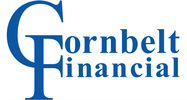|
Classifying workers as independent contractors — rather than employees — can save businesses money and provide other benefits. But the IRS is on the lookout for businesses that do this improperly to avoid taxes and employee benefit obligations.
To find out how the IRS will classify a particular worker, businesses can file optional IRS Form SS-8, “Determination of Worker Status for Purposes of Federal Employment Taxes and Income Tax Withholding.” However, the IRS has a history of reflexively classifying workers as employees, and filing this form may alert the IRS that your business has classification issues — and even inadvertently trigger an employment tax audit. Contractor vs. employee status A business enjoys several advantages when it classifies a worker as an independent contractor rather than as an employee. For example, it isn’t required to pay payroll taxes, withhold taxes, pay benefits or comply with most wage and hour laws. On the downside, if the IRS determines that you’ve improperly classified employees as independent contractors, you can be subject to significant back taxes, interest and penalties. That’s why filing IRS Form SS-8 for an up-front determination may sound appealing. But because of the risks involved, instead of filing the form, it can be better to simply properly treat independent contractors so they meet the tax code rules. Among other things, this generally includes not controlling how the worker performs his or her duties, ensuring you’re not the worker’s only client, providing Form 1099 and, overall, not treating the worker like an employee. Be prepared for workers filing the form Workers seeking determination of their status can also file Form SS-8. Disgruntled independent contractors may do so because they feel entitled to health, retirement and other employee benefits and want to eliminate self-employment tax liabilities. After a worker files Form SS-8, the IRS sends a letter to the business. It identifies the worker and includes a blank Form SS-8. The business is asked to complete and return it to the IRS, which will render a classification decision. But the Form SS-8 determination process doesn’t constitute an official IRS audit. Passing IRS muster If your business properly classifies workers as independent contractors, don’t panic if a worker files a Form SS-8. Contact us before replying to the IRS. With a proper response, you may be able to continue to classify the worker as a contractor. We also can assist you in setting up independent contractor relationships that can pass muster with the IRS. © 2018
0 Comments
When it comes to income tax returns, April 15 (actually April 17 this year, because of a weekend and a Washington, D.C., holiday) isn’t the only deadline taxpayers need to think about. The federal income tax filing deadline for calendar-year partnerships, S corporations and limited liability companies (LLCs) treated as partnerships or S corporations for tax purposes is March 15. While this has been the S corporation deadline for a long time, it’s only the second year the partnership deadline has been in March rather than in April.
Why the deadline change? One of the primary reasons for moving up the partnership filing deadline was to make it easier for owners to file their personal returns by the April filing deadline. After all, partnership (and S corporation) income passes through to the owners. The earlier date allows owners to use the information contained in the pass-through entity forms to file their personal returns. What about fiscal-year entities? For partnerships with fiscal year ends, tax returns are now due the 15th day of the third month after the close of the tax year. The same deadline applies to fiscal-year S corporations. Under prior law, returns for fiscal-year partnerships were due the 15th day of the fourth month after the close of the fiscal tax year. What about extensions? If you haven’t filed your calendar-year partnership or S corporation return yet, you may be thinking about an extension. Under the current law, the maximum extension for calendar-year partnerships is six months (until September 17, 2018, for 2017 returns). This is up from five months under prior law. So the extension deadline is the same — only the length of the extension has changed. The extension deadline for calendar-year S corporations also is September 17, 2018, for 2017 returns. Whether you’ll be filing a partnership or an S corporation return, you must file for the extension by March 15 if it’s a calendar-year entity. When does an extension make sense? Filing for an extension can be tax-smart if you’re missing critical documents or you face unexpected life events that prevent you from devoting sufficient time to your return right now. But keep in mind that, to avoid potential interest and penalties, you still must (with a few exceptions) pay any tax due by the unextended deadline. There may not be any tax liability from the partnership or S corporation return. If, however, filing for an extension for the entity return causes you to also have to file an extension for your personal return, you need to keep this in mind related to the individual tax return April 17 deadline. Have more questions about the filing deadlines that apply to you or avoiding interest and penalties? Contact us. © 2018 Individuals can deduct some vehicle-related expenses in certain circumstances. Rather than keeping track of the actual costs, you can use a standard mileage rate to compute your deductions. For 2017, you might be able to deduct miles driven for business, medical, moving and charitable purposes. For 2018, there are significant changes to some of these deductions under the Tax Cuts and Jobs Act (TCJA).
Mileage rates vary The rates vary depending on the purpose and the year:
In addition to deductions based on the standard mileage rate, you may deduct related parking fees and tolls. 2017 and 2018 limits The rules surrounding the various mileage deductions are complex. Some are subject to floors and some require you to meet specific tests in order to qualify. For example, if you’re an employee, only business mileage not reimbursed by your employer is deductible. It’s a miscellaneous itemized deduction subject to a 2% of adjusted gross income (AGI) floor. For 2017, this means mileage is deductible only to the extent that your total miscellaneous itemized deductions for the year exceed 2% of your AGI. For 2018, it means that you can’t deduct the mileage, because the TCJA suspends miscellaneous itemized deductions subject to the 2% floor for 2018 through 2025. If you’re self-employed, business mileage can be deducted against self-employment income. Therefore, it’s not subject to the 2% floor and is still deductible for 2018 through 2025, as long as it otherwise qualifies. Miles driven for health-care-related purposes are deductible as part of the medical expense deduction. And an AGI floor applies. Under the TCJA, for 2017 and 2018, medical expenses are deductible to the extent they exceed 7.5% of your adjusted gross income. For 2019, the floor will return to 10%, unless Congress extends the 7.5% floor. And while miles driven related to moving can be deductible on your 2017 return, the move must be work-related and meet other tests. For 2018 through 2025, under the TCJA, moving expenses are deductible only for certain military families. Substantiation and more There are also substantiation requirements, which include tracking miles driven. And, in some cases, you might be better off deducting actual expenses rather than using the mileage rates. We can help ensure you deduct all the mileage you’re entitled to on your 2017 tax return but don’t risk back taxes and penalties later for deducting more than allowed. Contact us for assistance and to learn how your mileage deduction for 2018 might be affected by the TCJA. © 2018 If you purchased qualifying property by December 31, 2017, you may be able to take advantage of Section 179 expensing on your 2017 tax return. You’ll also want to keep this tax break in mind in your property purchase planning, because the Tax Cuts and Jobs Act (TCJA), signed into law this past December, significantly enhances it beginning in 2018.
2017 Sec. 179 benefits Sec. 179 expensing allows eligible taxpayers to deduct the entire cost of qualifying new or used depreciable property and most software in Year 1, subject to various limitations. For tax years that began in 2017, the maximum Sec. 179 deduction is $510,000. The maximum deduction is phased out dollar for dollar to the extent the cost of eligible property placed in service during the tax year exceeds the phaseout threshold of $2.03 million. Qualified real property improvement costs are also eligible for Sec. 179 expensing. This real estate break applies to:
Permanent enhancements The TCJA permanently enhances Sec. 179 expensing. Under the new law, for qualifying property placed in service in tax years beginning in 2018, the maximum Sec. 179 deduction is increased to $1 million, and the phaseout threshold is increased to $2.5 million. For later tax years, these amounts will be indexed for inflation. For purposes of determining eligibility for these higher limits, property is treated as acquired on the date on which a written binding contract for the acquisition is signed. The new law also expands the definition of eligible property to include certain depreciable tangible personal property used predominantly to furnish lodging. The definition of qualified real property eligible for Sec. 179 expensing is also expanded to include the following improvements to nonresidential real property: roofs, HVAC equipment, fire protection and alarm systems, and security systems. Save now and save later Many rules apply, so please contact us to learn if you qualify for this break on your 2017 return. We’d also be happy to discuss your future purchasing plans so you can reap the maximum benefits from enhanced Sec. 179 expensing and other tax law changes under the TCJA. © 2018 Many businesses hired in 2017, and more are planning to hire in 2018. If you’re among them and your hires include members of a “target group,” you may be eligible for the Work Opportunity tax credit (WOTC). If you made qualifying hires in 2017 and obtained proper certification, you can claim the WOTC on your 2017 tax return.
Whether or not you’re eligible for 2017, keep the WOTC in mind in your 2018 hiring plans. Despite its proposed elimination under the House’s version of the Tax Cuts and Jobs Act, the credit survived the final version that was signed into law in December, so it’s also available for 2018. “Target groups,” defined Target groups include:
A potentially valuable credit Qualifying employers can claim the WOTC as a general business credit against their income tax. The amount of the credit depends on the:
Employers aren’t subject to a limit on the number of eligible individuals they can hire. In other words, if you hired 10 individuals from target groups that qualify for the $2,400 credit, your total credit would be $24,000. Remember, credits reduce your tax bill dollar-for-dollar; they don’t just reduce the amount of income subject to tax like deductions do. So that’s $24,000 of actual tax savings. Offset hiring costs The WOTC can provide substantial tax savings when you hire qualified new employees, offsetting some of the cost. Contact us for more information. © 2018 Small business owners: A SEP may give you one last 2017 tax and retirement saving opportunity2/22/2018 Are you a high-income small-business owner who doesn’t currently have a tax-advantaged retirement plan set up for yourself? A Simplified Employee Pension (SEP) may be just what you need, and now may be a great time to establish one. A SEP has high contribution limits and is simple to set up. Best of all, there’s still time to establish a SEP for 2017 and make contributions to it that you can deduct on your 2017 income tax return.
2018 deadlines for 2017 A SEP can be set up as late as the due date (including extensions) of your income tax return for the tax year for which the SEP is to first apply. That means you can establish a SEP for 2017 in 2018 as long as you do it before your 2017 return filing deadline. You have until the same deadline to make 2017 contributions and still claim a potentially hefty deduction on your 2017 return. Generally, other types of retirement plans would have to have been established by December 31, 2017, in order for 2017 contributions to be made (though many of these plans do allow 2017 contributions to be made in 2018). High contribution limits Contributions to SEPs are discretionary. You can decide how much to contribute each year. But be aware that, if your business has employees other than yourself: 1) Contributions must be made for all eligible employees using the same percentage of compensation as for yourself, and 2) employee accounts are immediately 100% vested. The contributions go into SEP-IRAs established for each eligible employee. For 2017, the maximum contribution that can be made to a SEP-IRA is 25% of compensation (or 20% of self-employed income net of the self-employment tax deduction) of up to $270,000, subject to a contribution cap of $54,000. (The 2018 limits are $275,000 and $55,000, respectively.) Simple to set up A SEP is established by completing and signing the very simple Form 5305-SEP (“Simplified Employee Pension — Individual Retirement Accounts Contribution Agreement”). Form 5305-SEP is not filed with the IRS, but it should be maintained as part of the business’s permanent tax records. A copy of Form 5305-SEP must be given to each employee covered by the SEP, along with a disclosure statement. Additional rules and limits do apply to SEPs, but they’re generally much less onerous than those for other retirement plans. Contact us to learn more about SEPs and how they might reduce your tax bill for 2017 and beyond. © 2018 With bonus depreciation, a business can recover the costs of depreciable property more quickly by claiming additional first-year depreciation for qualified assets. The Tax Cuts and Jobs Act (TCJA), signed into law in December, enhances bonus depreciation.
Typically, taking this break is beneficial. But in certain situations, your business might save more tax long-term by skipping it. That said, claiming bonus depreciation on your 2017 tax return may be particularly beneficial. Pre- and post-TCJA Before TCJA, bonus depreciation was 50% and qualified property included new tangible property with a recovery period of 20 years or less (such as office furniture and equipment), off-the-shelf computer software, water utility property and qualified improvement property. The TCJA significantly expands bonus depreciation: For qualified property placed in service between September 28, 2017, and December 31, 2022 (or by December 31, 2023, for certain property with longer production periods), the first-year bonus depreciation percentage increases to 100%. In addition, the 100% deduction is allowed for not just new but also used qualifying property. But be aware that, under the TCJA, beginning in 2018 certain types of businesses may no longer be eligible for bonus depreciation. Examples include real estate businesses and auto dealerships, depending on the specific circumstances. A good tax strategy or not? Generally, if you’re eligible for bonus depreciation and you expect to be in the same or a lower tax bracket in future years, taking bonus depreciation is likely a good tax strategy (though you should also factor in available Section 179 expense). It will defer tax, which generally is beneficial. On the other hand, if your business is growing and you expect to be in a higher tax bracket in the near future, you may be better off forgoing bonus depreciation. Why? Even though you’ll pay more tax this year, you’ll preserve larger depreciation deductions on the property for future years, when they may be more powerful — deductions save more tax when you’re paying a higher tax rate. What to do on your 2017 return The greater tax-saving power of deductions when rates are higher is why 2017 may be a particularly good year to take bonus depreciation. As you’re probably aware, the TCJA permanently replaces the graduated corporate tax rates of 15% to 35% with a flat corporate rate of 21% beginning with the 2018 tax year. It also reduces most individual rates, which benefits owners of pass-through entities such as S corporations, partnerships and, typically, limited liability companies, for tax years beginning in 2018 through 2025. If your rate will be lower in 2018, there’s a greater likelihood that taking bonus depreciation for 2017 would save you more tax than taking all of your deduction under normal depreciation schedules over a period of years, especially if the asset meets the deadlines for 100% bonus depreciation. If you’re unsure whether you should take bonus depreciation on your 2017 return — or you have questions about other depreciation-related breaks, such as Sec. 179 expensing — contact us. © 2018 Tax credits reduce tax liability dollar-for-dollar, potentially making them more valuable than deductions, which reduce only the amount of income subject to tax. Maximizing available credits is especially important now that the Tax Cuts and Jobs Act has reduced or eliminated some tax breaks for businesses. Two still-available tax credits are especially for small businesses that provide certain employee benefits.
1. Credit for paying health care coverage premiums The Affordable Care Act (ACA) offers a credit to certain small employers that provide employees with health coverage. Despite various congressional attempts to repeal the ACA in 2017, nearly all of its provisions remain intact, including this potentially valuable tax credit. The maximum credit is 50% of group health coverage premiums paid by the employer, if it contributes at least 50% of the total premium or of a benchmark premium. For 2017, the full credit is available for employers with 10 or fewer full-time equivalent employees (FTEs) and average annual wages of $26,200 or less per employee. Partial credits are available on a sliding scale to businesses with fewer than 25 FTEs and average annual wages of less than $52,400. The credit can be claimed for only two years, and they must be consecutive. (Credits claimed before 2014 don’t count, however.) If you meet the eligibility requirements but have been waiting to claim the credit until a future year when you think it might provide more savings, claiming the credit for 2017 may be a good idea. Why? It’s possible the credit will go away in the future if lawmakers in Washington continue to try to repeal or replace the ACA. At this point, most likely any ACA repeal or replacement wouldn’t go into effect until 2019 (or possibly later). So if you claim the credit for 2017, you may also be able to claim it on your 2018 return next year (provided you again meet the eligibility requirements). That way, you could take full advantage of the credit while it’s available. 2. Credit for starting a retirement plan Small employers (generally those with 100 or fewer employees) that create a retirement plan may be eligible for a $500 credit per year for three years. The credit is limited to 50% of qualified start-up costs. Of course, you generally can deduct contributions you make to your employees’ accounts under the plan. And your employees enjoy the benefit of tax-advantaged retirement saving. If you didn’t create a retirement plan in 2017, you might still have time to do so. Simplified Employee Pensions (SEPs) can be set up as late as the due date of your tax return, including extensions. If you’d like to set up a different type of plan, consider doing so for 2018 so you can potentially take advantage of the retirement plan credit (and other tax benefits) when you file your 2018 return next year. Determining eligibility Keep in mind that additional rules and limits apply to these tax credits. We’d be happy to help you determine whether you’re eligible for these or other credits on your 2017 return and also plan for credits you might be able to claim on your 2018 return if you take appropriate actions this year. © 2018 Working from home has become commonplace. But just because you have a home office space doesn’t mean you can deduct expenses associated with it. And for 2018, even fewer taxpayers will be eligible for a home office deduction.
Changes under the TCJA For employees, home office expenses are a miscellaneous itemized deduction. For 2017, this means you’ll enjoy a tax benefit only if these expenses plus your other miscellaneous itemized expenses (such as unreimbursed work-related travel, certain professional fees and investment expenses) exceed 2% of your adjusted gross income. For 2018 through 2025, this means that, if you’re an employee, you won’t be able to deduct any home office expenses. Why? The Tax Cuts and Jobs Act (TCJA) suspends miscellaneous itemized deductions subject to the 2% floor for this period. If, however, you’re self-employed, you can deduct eligible home office expenses against your self-employment income. Therefore, the deduction will still be available to you for 2018 through 2025. Other eligibility requirements If you’re an employee, your use of your home office must be for your employer’s convenience, not just your own. If you’re self-employed, generally your home office must be your principal place of business, though there are exceptions. Whether you’re an employee or self-employed, the space must be used regularly (not just occasionally) and exclusively for business purposes. If, for example, your home office is also a guest bedroom or your children do their homework there, you can’t deduct the expenses associated with that space. 2 deduction options If you’re eligible, the home office deduction can be a valuable tax break. You have two options for the deduction:
More rules and limits Be aware that we’ve covered only a few of the rules and limits here. If you think you may be eligible for the home office deduction on your 2017 return or would like to know if there’s anything additional you need to do to be eligible on your 2018 return, contact us. © 2018 Although the drop of the corporate tax rate from a top rate of 35% to a flat rate of 21% may be one of the most talked about provisions of the Tax Cuts and Jobs Act (TCJA), C corporations aren’t the only type of entity significantly benefiting from the new law. Owners of noncorporate “pass-through” entities may see some major — albeit temporary — relief in the form of a new deduction for a portion of qualified business income (QBI).
A 20% deduction For tax years beginning after December 31, 2017, and before January 1, 2026, the new deduction is available to individuals, estates and trusts that own interests in pass-through business entities. Such entities include sole proprietorships, partnerships, S corporations and, typically, limited liability companies (LLCs). The deduction generally equals 20% of QBI, subject to restrictions that can apply if taxable income exceeds the applicable threshold — $157,500 or, if married filing jointly, $315,000. QBI is generally defined as the net amount of qualified items of income, gain, deduction and loss from any qualified business of the noncorporate owner. For this purpose, qualified items are income, gain, deduction and loss that are effectively connected with the conduct of a U.S. business. QBI doesn’t include certain investment items, reasonable compensation paid to an owner for services rendered to the business or any guaranteed payments to a partner or LLC member treated as a partner for services rendered to the partnership or LLC. The QBI deduction isn’t allowed in calculating the owner’s adjusted gross income (AGI), but it reduces taxable income. In effect, it’s treated the same as an allowable itemized deduction. The limitations For pass-through entities other than sole proprietorships, the QBI deduction generally can’t exceed the greater of the owner’s share of:
Another restriction is that the QBI deduction generally isn’t available for income from specified service businesses. Examples include businesses that involve investment-type services and most professional practices (other than engineering and architecture). The W-2 wage limitation and the service business limitation don’t apply as long as your taxable income is under the applicable threshold. In that case, you should qualify for the full 20% QBI deduction. Careful planning required Additional rules and limits apply to the QBI deduction, and careful planning will be necessary to gain maximum benefit. Please contact us for more details. © 2018 |
AuthorAdam Carr, MBA, EA Archives
June 2024
Categories
All
|











 RSS Feed
RSS Feed

